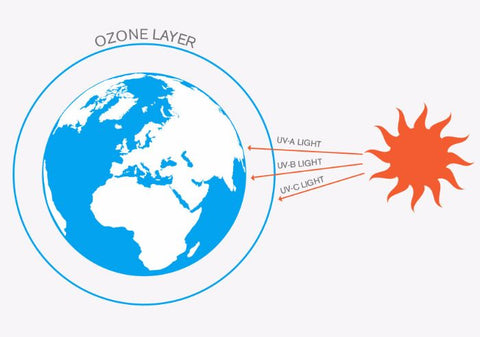How does UV light sanitize?
The Three Types of UV Rays
UV light has three wavelength categories: UV-A, UV-B, and UV-C. UV-C light is a short-wavelength, ultraviolet light that breaks apart germ DNA, leaving it unable to function or reproduce. In other words, UV-C light is germicidal (UV-A and UV-B light are not). UV-C can even neutralize “superbugs” that have developed a resistance to antibiotics.

UV-C that causes this germicidal effect is rare on Earth as our atmosphere blocks it. This light is harmful to our eyes, hence why it must be done within PhoneSoap's controlled environment. You will never see the UV light that is killing all those germs, but an external blue indicator on the device will let you know when your device is being sanitized. With powerful UV-C light inside, PhoneSoap has a deadly effect on microorganisms such as pathogens, viruses, bacteria, and others.

Your phone's warm battery allows bacteria to thrive and reproduce. UV-C light penetrates the cell and disrupts the DNA, killing the pathogen. Our UV-C light is not hot, so while it effectively kills bacteria, it will not hurt your phone.
History of UV and Sanitization
Sanitizing with UV-C light has been a normal practice since the mid-20th century. In fact, the 1903 Nobel Prize in Medicine was awarded to Niels Finsen for using UV light to fight tuberculosis. Today, hospitals and laboratories use UV light to keep their facilities sterile, which means it's perfect for sanitizing mobile devices, which are especially good at harboring and growing bacteria.

To see PhoneSoap's UV-C light in action, check out this Discovery Channel video!
